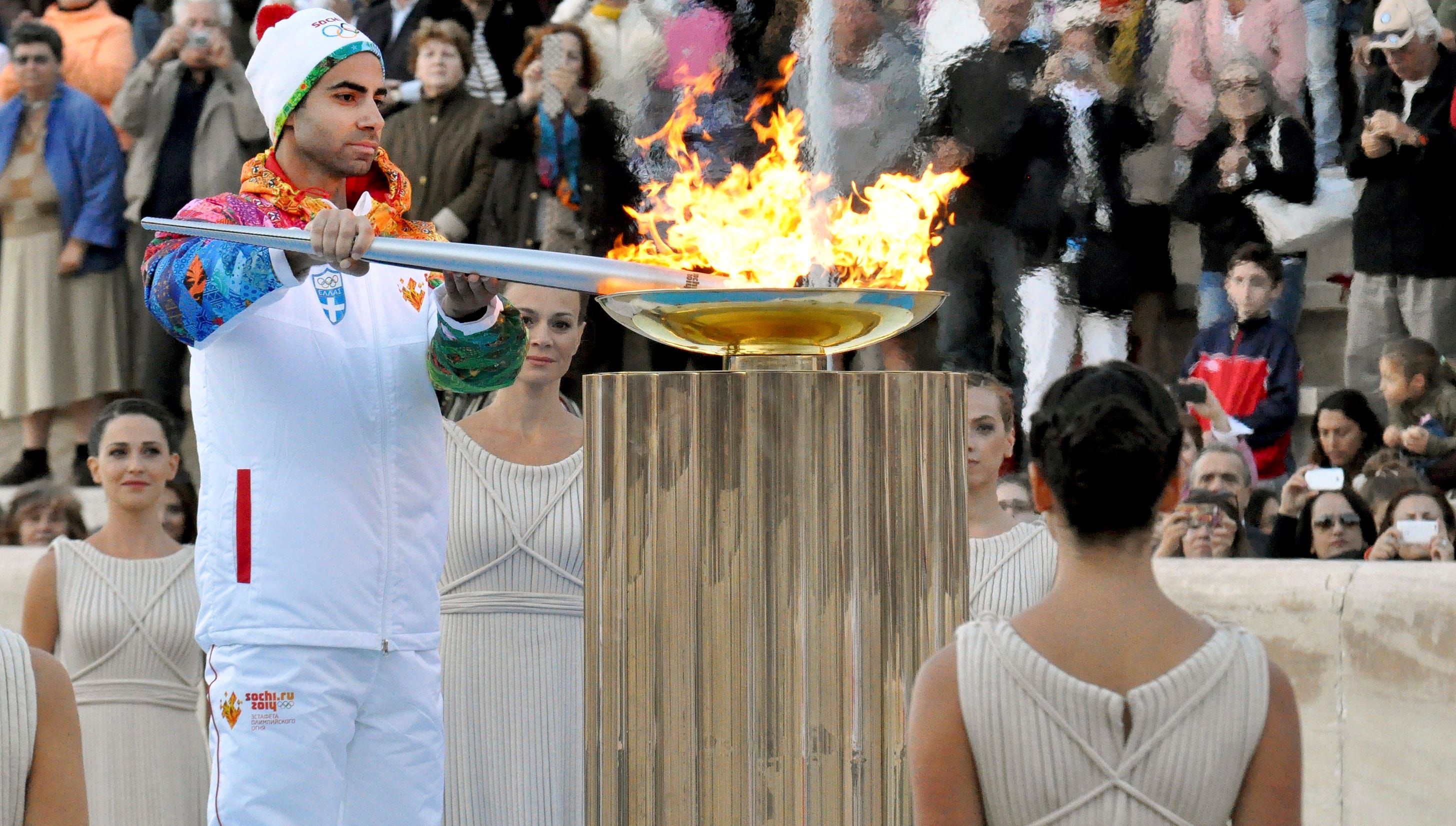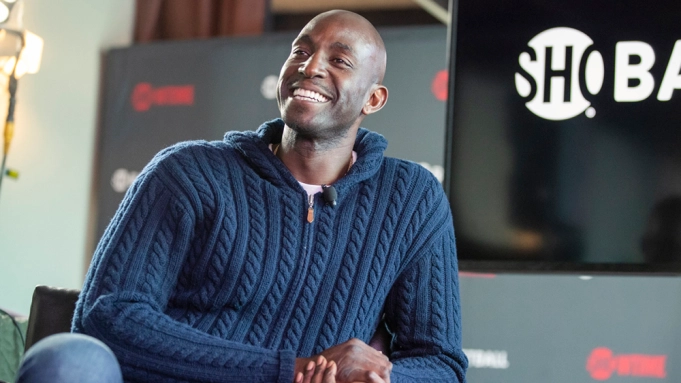By TERRY LYONS
BOSTON – There are very few things that burn me up more than calls for a boycott of the Olympic Games. I tend to side with the athletes who’ve spent their lives training for a relatively short window for competition against the youth of the world who assemble every four years to compete in the Summer or Winter Olympic Games.
In 1980, the United States with 65 other countries and territories boycotted the Summer Games in Moscow to protest the Russian invasion of Afghanistan. In 1984, the Russians and 14 other (mostly Eastern Bloc) countries returned the idiocy and boycotted the Los Angeles (USA) Games.
Nothing was accomplished by the two boycotts and nothing will be accomplished with the current discussion of a new kind of boycott – a “diplomatic boycott’ – by the USA of the Beijing Winter Games, scheduled for this coming February ‘22.
This week, news coverage of the potential USA diplomatic boycott surfaced again as US President Joe Biden conducted a three-plus hour virtual summit call with Chinese President Xi Jinping. Biden said Thursday he is considering a diplomatic boycott of the 2022 Winter Olympics, which would deliver a “stinging rebuke to China over its alleged human rights abuses,” according to news reports by Reuters.
It’s “something we are considering,” Biden said when asked about a U.S. diplomatic boycott of the Games, although the summit was “aimed at reducing tensions between the two countries, which have flared over the COVID-19 pandemic, trade policies, Taiwan and other flashpoints.,” said Reuters.
Human rights advocates have increasingly lobbied the White House to call for a full-scale U.S. boycott of the 2022 Games. “The decision not to send an official American delegation to the Games would fall short of that dramatic step, but would still represent a major snub,” noted Reuters. “The U.S. traditionally sends a roster of high-profile dignitaries, often led by the sitting President or Vice President or first lady, to attend Olympic events – including the opening ceremonies. First Lady Jill Biden led the U.S. delegation to the most recent Summer Olympics in Tokyo.
What does the USOC (now USOPC) think?
“We strongly believe that the governments of the world, including our own, and the respective diplomatic teams and experts should lead the conversation about international relations,” USOPC chief executive officer Sarah Hirshland said.
Where does @WhileYoung(Ideas) come down?
Sports diplomacy is a huge and highly effective and efficient mechanism to bridge gaps, share ideas and literally use the sport(s) as a guiding light to many of the same values all nations face in these terrible times of the COVID-19 global pandemic.
The athletes themselves become the focus and example-setters. The diplomats – if they are not childish – don’t compete for athletic medal counts but go out of their way to welcome and contribute to discussions which can lead to concrete, mutually beneficial and substantive improvements for all nations.
In China alone, we’ve improved relationships through “Ping Pong Diplomacy” in the late ‘70s all the way to “Yao Ming Diplomacy” in the early 2000s. While the sports side (aka the Toy Store) might not solve the most troubling issues (Human Rights to all political differences), it can begin the discussion on common ground to help build the relationships that can lead to more important discussions, with the youth of the world providing the example for their older world leaders.
Too often, an ineffective sports boycott costs a young athlete the ability to compete for an Olympic medal or simply earn the title of Olympic competitor. Politicians, instead of facing the issue at hand, try to deflect the attention by implementing a sports boycott, rather than multi-lateral talks and negotiations. In every instance, the boycott goes by and nothing is accomplished except the disappointment of the athletes.
HERE NOW, THE NOTES: On August 9, 2008, Air Force One had yet to clear US air space when my mobile phone range with the White House Director of Communications on the other end of the line. “Sorry, T, but because of normal security reasons, I couldn’t call earlier but we’re on our way to Beijing and I need your help. As you can probably tell from the background, I’m on Air Force One with the President. Your on speaker phone, too, okay?
“We’re thinking of attending both the USA Basketball men’s game against China and the Women’s first game, too. They play the Czech Republic at 8pm. How can I make it work best?”
While I had just waved good-bye to the US Men’s National team when they departed a few days earlier, NBA and USAB services completed, and was now officially a TV spectator of the Summer Olympics for the first time since 1988, it was obviously time to think fast.
“It’s easy,” I said. “If you’re at a USA women’s game, be sure the President is seated next to Val Ackerman and/or Jim Tooley (head of USA Basketball Federation) and at the men’s games, have the President with Jerry Colangelo and Jim. They can take care of EVERYTHING you might need and will know all the “go-to” people.”
“Thanks, TL.” (Click).
SPEAKING OF USA BASKETBALL: Veteran NBA and international tournament players Justin Anderson (Fort Wayne Mad Ants/Virginia) and Isaiah Thomas (free agent/Washington) were added by USA Basketball to its November 2021 USA World Cup Qualifying Team. The pair were added to the USA roster after an injury forced DaQuan Jeffries (College Park Skyhawks/Tulsa) to withdraw, and after Frank Mason III (South Bay Lakers/Kansas) was not cleared for full participation.
Anderson and Thomas join USA team members Jordan Bell (Santa Cruz Warriors/Oregon), Brian Bowen II (Iowa Wolves), Josh Gray (Long Island Nets/LSU), Shaq Harrison (Delaware Blue Coats/Tulsa), BJ Johnson(Lakeland Magic/LaSalle), Luke Kornet (Maine Celtics/Vanderbilt), Chasson Randle (free agent/Stanford), Zavier Simpson (Oklahoma City Blue/Michigan) and Emanuel Terry (Stockton Kings/Lincoln Memorial). … Former NBA head coach Jim Boylen will serve as head coach of the USA Basketball Men’s World Cup Qualifying Team while former USA Basketball coaches Ty Ellis and Othella Harrington will serve as assistant coaches. … The USA squad will train Nov. 20-25 at the University of Houston and will participate in the first competition window of the 2021-23 FIBA World Cup Qualifying games, which will be played in a bubble format in Chihuahua, Mexico starting November 28. … The 2023 FIBA World Cup for Basketball will be staged in Japan-The Philippines-Indonesia.
On Saturday, Nov. 20, USA Basketball added NBA G League forward Haywood Highsmith (Delaware Blue Coats/Wheeling) after Orlando Johnson (free agent/UC Santa Barbara) was not available to participate.
ANYTHING IS POSSIBLE: The Boston Celtics’ acquisition of superstar forward-center Kevin Garnett began on the night of the 2007 NBA Draft (June 28) when the Celtics did two things to make a future move for Garnett possible. … Although Ray Allen and Garnett would later be at odds over Allen’s post championship departure to Miami, that late June 2007 night, the Celtics acquired Hall of Fame sharp-shooter Allen in a multi-player deal with the then-Seattle SuperSonics, shipping a package of point guard Delonte West, small forward Wally Szczerbiak and forward Jeff Green to the the Sonics in exchange for Allen and center Glen “Big Baby” Davis.
The two steps taken by then-Celtics head of basketball operations Danny Ainge?
- Obtaining another scoring threat in Allen to form a “Big 3” needed to win.
- Moving Szczerbiak, a former teammate of Garnett’s he was none too fond of in previous exposure.
The “Anything Is Possible” journey to the 2008 NBA title took a giant step that night. Garnett’s story is currently being told via a Showtime sports documentary entitled, (You Guessed It): ANYTHING IS POSSIBLE. … The story is good. KG’s personality shining through is great. The language is filthy.
Co-directed and produced by Eric Newman and Dan Levin, along with producers Mike Marangu, Marc Levin and Brian Bennett—KG’s partner at his production company, Content Cartel—the documentary is a look at KG’s past, delving heavily into Garnett’s youth, his progression as a high school player and astonishing talents displayed at Chicago’s Farragut Academy.
The story winds its way to the fact Garnett became the fifth overall pick of the 1995 draft with team GM Kevin McHale and the Minnesota Timberwolves taking the gamble on the 6-11 high school phenom. Until then, only a sporadic few (Moses Malone, Bill Willoughby, Darryl Dawkins and a small handful of others) had made it to the NBA (or ABA) via high school, not college.
The documentary explains the successful start of Garnett’s NBA career in Minnesota seemingly opened the floodgates for other high school talents to jump right to the NBA, namely Kobe Bryant, Jermaine O’Neal, LeBron James, Rashard Lewis, Tyson Chandler, Amare Stoudimire, Dwight Howard, and Tracy McGrady.
As you would expect with anything and everything Garnett does, the story is true, it’s raw and it is produced by circle of people Garnett allowed into his tight inner sanctum, a place he guards 24/7.
Another take-away for seasoned NBA observers is the undeniable similarities between Garnett and NBA/Celtics’ All-Time great Bill Russell, both very guarded and well-aware of the circle of madness that is fame and the NBA. Both very conscious to keep their privacy – private and families secure.
The documentary is currently running/streaming on Showtime after its November 12th release date. Interviews of the likes of Doc Rivers, KG’s championship coach with the 2008 Celtics, and former teammate Sam Cassell, examine the complexity of Garnett – a player with serious work ethic, intensity on and off court, humor, loyalty to those he trusts, keen observation of the fast-moving world surrounding him and a disdain for anything and anyone who disrupts his normal routine.
Said Eric Newman to Variety: “I don’t think the younger generation realizes the overall impact he had, which we obviously do our best to convey in the film. It’s going from high school to the NBA when no one had done it for 20 plus years and the circumstances in which he did it. It’s the pre-salary cap NBA when he got that contract which changed the financial structure of the sport. It’s transforming this physical, intense power forward position where he adds this dynamic skill set on both ends of the floor. And then of course it’s forming the Big Three with the Celtics. We tried to weave these four pillars in without being too in your face about it, but find another — forget basketball, find another athlete who had this kind of impact on their sport. There’s not many.”






